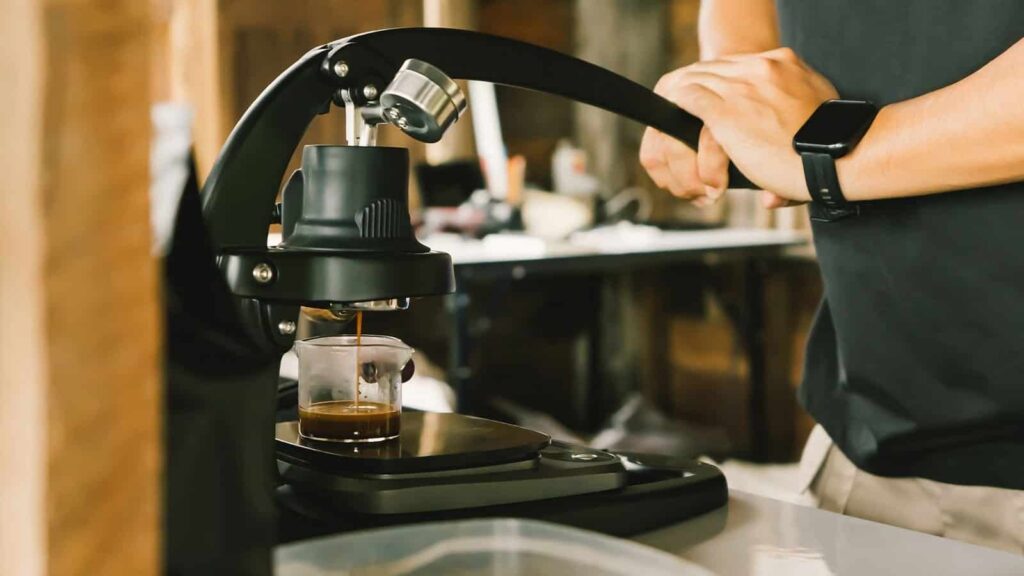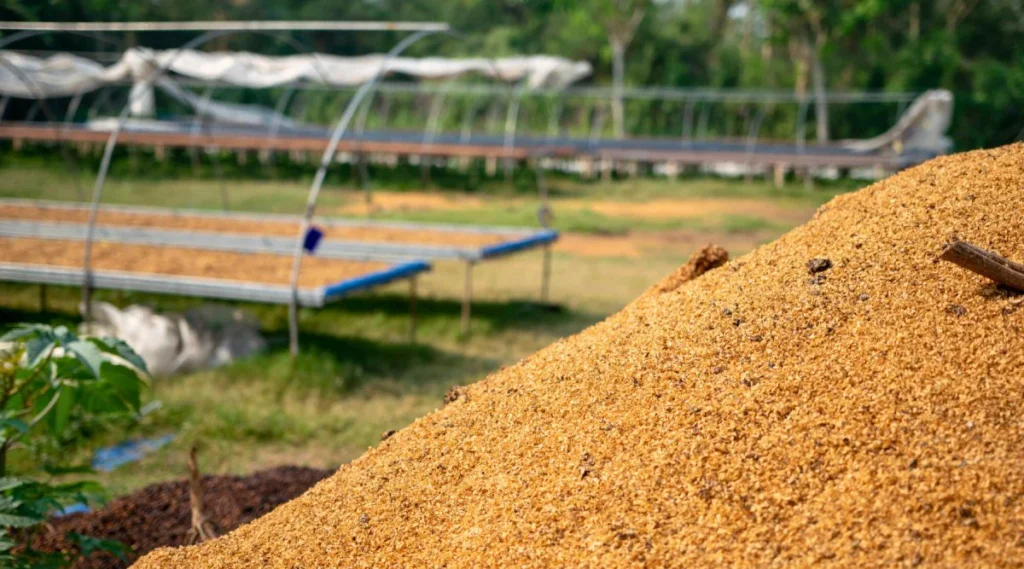If you’re a coffee enthusiast or an aspiring home barista, manual espresso machines might just be your new best friend. These machines, often revered by purists, offer an unmatched hands-on experience that automated machines simply can’t replicate.
With a manual espresso machine, you control every aspect of the brewing process, from the grind size to the pressure applied. This level of control allows you to fine-tune each shot to perfection, delivering a personalized coffee experience that caters to your specific tastes.




Choosing the Right Manual Espresso Machine
Selecting the perfect manual espresso machine hinges on a few key factors: personal needs, budget, and coffee preferences. With a plethora of options on the market, finding the right fit can seem daunting, but breaking it down into these categories simplifies the process.

- Personal Needs: Consider how often you plan to use your espresso maker manual. If you’re brewing daily, a sturdy and reliable machine with durable components is essential. Think about your space as well; some manual machines have a larger footprint, so ensure you have enough counter space to accommodate your new coffee companion.
- Budget: Manual espresso machines range from affordable to premium. While it’s tempting to go for the top-of-the-line model, it’s crucial to find a machine that balances cost and functionality. Beginners might start with a more budget-friendly option to hone their skills before investing in a high-end machine.
- Coffee Preferences: Your taste in coffee plays a significant role in your choice. Lever machines, for instance, allow for more control over extraction pressure, which can highlight different flavor profiles in your espresso. If you enjoy experimenting with various coffee beans and grind sizes, a manual machine offers the flexibility to explore and refine your brewing techniques.
Key Features to Consider
When choosing a manual espresso machine, paying attention to key features is essential to ensure you get the best performance and durability. Here’s a detailed breakdown of the important aspects to consider:

- Pressure: The pressure applied during the extraction process significantly impacts the quality of your espresso. Manual machines often allow you to control this pressure, giving you the flexibility to experiment and perfect your shot. Look for machines that provide consistent and adjustable pressure to achieve the ideal extraction.
- Boiler Type: The type of boiler in your espresso machine affects how quickly it heats up and maintains temperature stability. Single boiler machines are usually more affordable and sufficient for home use, but dual boiler systems allow you to brew espresso and steam milk simultaneously, which is great for making multiple drinks in a row. Heat exchange boilers offer a good middle ground, providing quicker recovery times and temperature stability.
- Build Quality: The build quality of a manual espresso machine is crucial for longevity and performance. Machines made with high-quality materials like stainless steel and brass tend to be more durable and resistant to wear and tear. Check for solid construction, quality seals, and robust levers to ensure your machine can withstand regular use.
- Ease of Use and Maintenance: While manual machines require more involvement than their automatic counterparts, some models are designed with user-friendly features that make the process smoother. Consider machines with easy-to-remove parts for cleaning and maintenance, as well as those with clear instructions and intuitive operation.
Understanding the Mechanics of Espresso Making
Espresso making is both an art and a science, with various technical aspects playing a critical role in the brewing process. Understanding these mechanics can help you make better coffee and get the most out of your manual espresso machine.

At the heart of every espresso machine are several key components: the portafilter, group head, boiler, and lever or piston mechanism. The portafilter holds the ground coffee and attaches to the group head, where hot water is forced through the coffee under high pressure. The boiler heats the water to the ideal temperature, and the lever or piston mechanism allows you to control the pressure applied during extraction.

Each of these components must work in harmony to produce a rich, flavorful espresso shot. The grind size, coffee dose, tamping pressure, and extraction time all interact with the machine’s mechanics to influence the final taste. By mastering these elements, you can tailor each shot to your liking and consistently achieve café-quality results at home.
The Role of Pressure and Temperature
Two of the most critical factors in espresso making are pressure and temperature. Both have a profound impact on the quality of your espresso shot, and understanding how to control them is key to perfecting your brew.
Pressure: The ideal pressure for extracting espresso is around 9 bars. Manual espresso machines often allow you to manually adjust this pressure, giving you control over the extraction process.
Proper pressure ensures that water flows evenly through the coffee grounds, extracting the right balance of flavors and oils. Too little pressure results in under-extracted, weak espresso, while too much pressure can cause over-extraction, leading to a bitter taste.


Temperature: The water temperature should be between 195°F and 205°F (90°C to 96°C). Consistent temperature is crucial for extracting the full range of flavors from the coffee.
Manual machines with high-quality boilers and temperature stability features help maintain this ideal range. Variations in temperature can lead to sour or burnt flavors, so a stable temperature is essential for a balanced and delicious espresso shot.
Step-by-Step Guide to Brewing with a Manual Espresso Machine
Brewing coffee with a manual espresso machine can be a rewarding experience that brings out your inner barista. This step-by-step guide will walk you through the entire process, ensuring you can create barista-style coffee at home.

Grinding, Tamping, and Extraction
Start by gathering all necessary equipment: your manual espresso machine, a quality burr grinder, fresh coffee beans, a tamper, and a scale. Ensure your machine is clean and properly set up. Mastering the techniques of grinding, tamping, and extraction is essential for making great espresso. Here’s a closer look at each step:
Grinding: Use a burr grinder to achieve a fine, consistent grind. The grind size should be fine enough to create resistance during extraction but not so fine that it clogs the portafilter. Freshly ground coffee is key to a vibrant and aromatic espresso.
Tamping: Tamping evenly and with the right pressure ensures uniform extraction. Hold the tamper like a door handle, press down with consistent pressure, and twist slightly to polish the surface. A good tamp creates a compact coffee bed that water can pass through evenly.
Dosing: Place the ground coffee into the portafilter. Use a distribution tool or gently tap the portafilter to level the coffee grounds evenly.
Pre-infusion: Attach the portafilter to the group head and begin the pre-infusion process. This involves allowing a small amount of water to soak the coffee grounds, helping to saturate them evenly and reduce channeling. Pre-infusion typically lasts around 5-8 seconds.
Extraction: The extraction process is where all your preparation pays off. Apply steady pressure during extraction, aiming for a balanced flow rate. The first few drops should be dark and syrupy, gradually lightening as the shot progresses. Monitor the shot time and adjust grind size or tamping pressure as needed to achieve the perfect balance of flavors.
Finishing: Once the desired shot volume is reached, stop the extraction. Serve your espresso immediately to enjoy the freshest taste.
Maintenance and Care
To ensure your manual espresso machine remains in top condition and delivers consistently excellent coffee, regular maintenance and care are crucial. Proper upkeep not only extends the lifespan of your machine but also ensures optimal performance and taste. Here are some essential tips for maintaining your espresso machine:
- Daily Cleaning: After each use, clean the portafilter, group head, and steam wand. Remove spent coffee grounds and wipe down any spills or splashes. This prevents coffee oils and residues from building up and affecting the taste of your espresso.
- Weekly Deep Cleaning: At least once a week, perform a more thorough cleaning. Disassemble removable parts like the portafilter, baskets, and drip tray, and wash them with warm, soapy water. Rinse thoroughly and allow them to air dry.
- Backflushing: Backflushing is essential for keeping the internal components of your machine clean. Use a blind filter basket and a specialized espresso machine cleaning powder. Run the machine to force water and cleaner through the system, removing any internal coffee residues and oils.
- Descaling: Depending on your water hardness, descale your machine every 1-3 months. Use a descaling solution to remove mineral deposits from the boiler and internal pipes. This helps maintain optimal water flow and temperature, ensuring consistent espresso quality.
- Gasket and Seal Checks: Regularly inspect gaskets and seals for wear and tear. Replace them as needed to prevent leaks and maintain proper pressure during extraction.
Cleaning and Descale Techniques
Proper cleaning and descaling are essential for the longevity and performance of your manual espresso machine. Here are specific methods for keeping your machine in top shape:
Cleaning:
- Daily Routine:
- Portafilter and Basket: After each use, knock out spent coffee grounds and rinse the portafilter and basket with hot water. Wipe them dry with a clean cloth.
- Group Head: Flush the group head by running water through it for a few seconds to remove any remaining coffee particles. Use a group head brush to clean around the gasket and screen.
- Steam Wand: After steaming milk, purge the steam wand by opening the valve and letting steam out for a few seconds. Wipe the wand with a damp cloth to remove milk residue.
- Weekly Deep Clean:
- Disassemble Parts: Remove the portafilter, baskets, and drip tray. Soak them in warm, soapy water for a few minutes, then scrub with a brush to remove any buildup.
- Group Head Cleaning: Use a group head cleaning brush and a small amount of espresso machine cleaning powder to scrub the group head thoroughly. Rinse well.

Descaling:
- Preparation: Fill the water reservoir with a descaling solution, following the manufacturer’s instructions for dilution.
- Descaling Process:
- Run the Solution: Turn on the machine and run the descaling solution through the group head and steam wand, just as you would when making coffee and steaming milk. Allow the solution to sit in the machine for about 15-20 minutes to dissolve mineral deposits.
- Flush the System: Empty the water reservoir, fill it with fresh water, and run the machine to flush out any remaining descaling solution. Repeat this step until the water runs clear and has no taste of the descaling solution.

Comparing Top Models
When it comes to choosing a manual espresso machine, the market offers a variety of excellent options, each with its unique features and benefits. Here, we review and compare several top manual espresso machines currently available, helping you make an informed decision based on your needs and preferences.
1. La Pavoni Europiccola
- Overview: The La Pavoni Europiccola is a classic lever espresso machine known for its elegant design and robust performance. It’s a favorite among enthusiasts for its ability to produce rich, flavorful espresso.
- Key Features:
- Chrome-plated brass boiler
- Manual lever operation
- Steam wand for frothing milk
- Price Range: $$$
2. Flair Espresso Maker
- Overview: The Flair Espresso Maker is a modern, portable manual espresso machine that offers a minimalist design without compromising on quality. It’s ideal for those who want great espresso on the go.
- Key Features:
- Detachable brewing head
- Stainless steel construction
- Pressure gauge for consistent shots
- Price Range: $$
3. Elektra Microcasa a Leva
- Overview: The Elektra Microcasa a Leva is an eye-catching, vintage-style machine that combines beauty with functionality. It’s perfect for those who appreciate aesthetics and excellent espresso.
- Key Features:
- Copper and brass construction
- Spring piston lever
- Large boiler capacity
- Price Range: $$$$
4. ROK EspressoGC
- Overview: The ROK EspressoGC is a manual espresso maker that offers a hands-on brewing experience with a unique design. It’s known for being durable and easy to use.
- Key Features:
- Polished aluminum frame
- Pressure control through manual force
- Environmentally friendly, no electricity required
- Price Range: $$
Pros and Cons of Popular Brands
Each brand has its strengths and weaknesses, making some more suitable for certain users than others. Here’s a breakdown of the pros and cons of popular manual espresso machine brands to help you make an informed decision:
La Pavoni
- Pros:
- Timeless design and high build quality
- Excellent control over extraction pressure
- Produces rich, crema-topped espresso
- Cons:
- Steeper learning curve for beginners
- Expensive initial investment
- Requires regular maintenance
Flair Espresso
- Pros:
- Portable and compact
- Affordable price point
- Easy to use and clean
- Cons:
- Limited steaming capabilities
- Requires manual pressure application, which can be inconsistent for new users
Elektra
- Pros:
- Stunning, vintage aesthetics
- High-quality materials and craftsmanship
- Consistent shot quality with spring piston lever
- Cons:
- Very expensive
- Large and heavy, not ideal for small kitchens
- More complex to operate and maintain
ROK Espresso
- Pros:
- Durable and sustainable design
- No need for electricity, perfect for off-grid use
- Affordable and easy to use
- Cons:
- Manual pressure can be hard to perfect
- Limited to espresso only, no built-in steaming function
- May require additional accessories for best performance
Enhancing Your Espresso Experience
Taking your espresso-making skills to the next level involves more than just having a great manual espresso machine. The right accessories and techniques can significantly enhance your experience and the quality of your coffee. Here are some suggestions to help you elevate your espresso game.
1. Essential Accessories:
- Tamper: A high-quality tamper is crucial for achieving a consistent and even tamp. Look for one that fits your portafilter snugly and feels comfortable in your hand.
- Grinder: A burr grinder is a must for achieving the precise grind size needed for espresso. Consistency is key, so invest in a good-quality grinder.
- Scale: Measuring your coffee dose and water output precisely can greatly improve consistency. A digital scale with a timer helps you monitor both weight and extraction time.
- Knock Box: A knock box provides a convenient way to dispose of used coffee grounds. It keeps your workspace tidy and makes cleanup easier.
- Milk Frothing Pitcher: If you enjoy milk-based drinks like lattes and cappuccinos, a stainless steel frothing pitcher is essential for steaming and pouring milk.
2. Advanced Techniques:
- Dialing in Your Grind: Finding the perfect grind size for your coffee beans is essential. Start with a medium-fine grind and adjust based on the extraction time and taste. A shot that pulls too quickly needs a finer grind, while a slow extraction requires a coarser grind.
- Pre-infusion: Allowing water to soak the coffee grounds before full extraction can enhance flavor extraction and reduce channeling. This can be done by briefly activating the pump or lever before applying full pressure.
- Temperature Surfing: For machines without precise temperature control, temperature surfing can help you achieve the ideal brewing temperature. Run water through the group head to stabilize the temperature before pulling your shot.
- Latte Art: Mastering latte art can make your coffee experience more enjoyable and impressive. Practice pouring techniques to create beautiful designs in your milk-based drinks.
3. Experimentation and Refinement:
- Bean Selection: Different beans offer unique flavors and characteristics. Experiment with various single-origin coffees and blends to find your favorite profiles.
- Water Quality: The quality of water used in espresso making can impact the taste significantly. Use filtered water to avoid impurities and achieve a cleaner taste.
- Maintenance Routine: Regular cleaning and maintenance of your machine ensure consistent performance and longevity. Develop a routine to keep your machine in optimal condition.
Must-Have Accessories for Every Barista
To truly excel at making espresso at home, you’ll need more than just a manual espresso machine. The right tools and accessories can make a significant difference in the quality of your brews and the overall experience. Here are some essential items every home barista should have:
- 1. Tamper: A high-quality tamper is crucial for evenly compressing the coffee grounds in the portafilter. Look for a tamper that fits your portafilter precisely and feels comfortable in your hand. A consistent tamp ensures uniform extraction, which is key to a great espresso shot.
- 2. Burr Grinder: A burr grinder is essential for achieving the fine, consistent grind required for espresso. Unlike blade grinders, burr grinders produce uniform particles, which leads to better extraction and flavor. Invest in a good-quality burr grinder to maximize your coffee’s potential.
- 3. Digital Scale: Precision is vital in espresso making. A digital scale helps you measure your coffee dose and water output accurately. This ensures consistency from shot to shot, helping you refine your technique and achieve the perfect balance of flavors.
- 4. Knock Box: A knock box provides a convenient way to dispose of spent coffee grounds. It keeps your workspace clean and makes cleanup easier. Choose a sturdy knock box that can withstand regular use.
- 5. Milk Frothing Pitcher: If you enjoy milk-based drinks like lattes and cappuccinos, a stainless steel frothing pitcher is essential. Look for a pitcher with a spout designed for pouring latte art, which can help you create beautiful designs.
- 6. Thermometer: To steam milk to the perfect temperature, a thermometer is a handy tool. It ensures your milk is heated to the ideal range (around 150-155°F) without scalding, which is crucial for both texture and flavor.
- 7. Cleaning Brushes: Keeping your espresso machine clean is vital for maintaining performance and flavor. A set of cleaning brushes can help you reach all the nooks and crannies, ensuring your machine stays in top condition.
- 8. Distribution Tool: A distribution tool helps evenly distribute coffee grounds in the portafilter before tamping. This reduces channeling and promotes even extraction, leading to a better-tasting espresso.
- 9. Shot Glasses: Shot glasses with measurement markings allow you to monitor the volume of your espresso shots. This helps you fine-tune your extraction time and adjust your technique as needed.
- 10. Water Filter: The quality of water used in espresso making can significantly impact the taste. Using a water filter ensures you’re brewing with clean, impurity-free water, enhancing the overall flavor of your coffee.
Disclosure: Our blog contains affiliate links to products. We may receive a commission for purchases made through these links. However, this does not impact our reviews and comparisons. We try our best to keep things fair and balanced, in order to help you make the best choice for you.





One Response